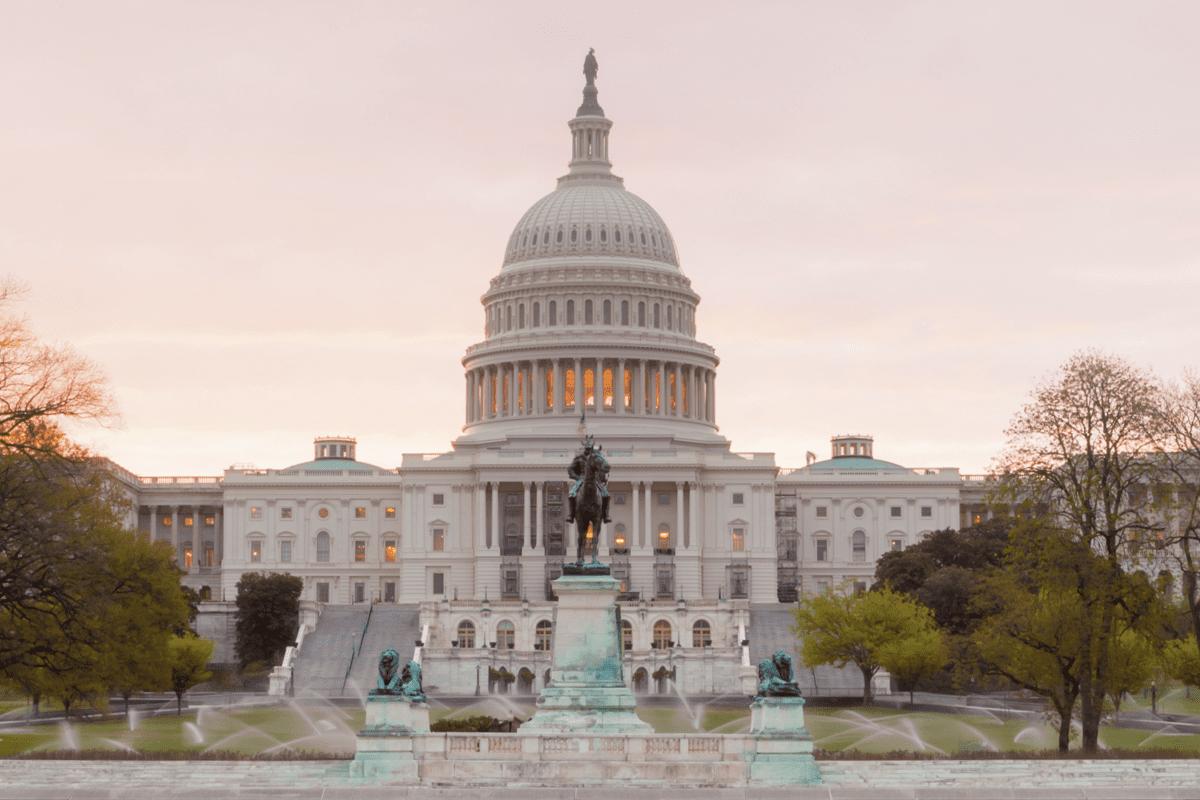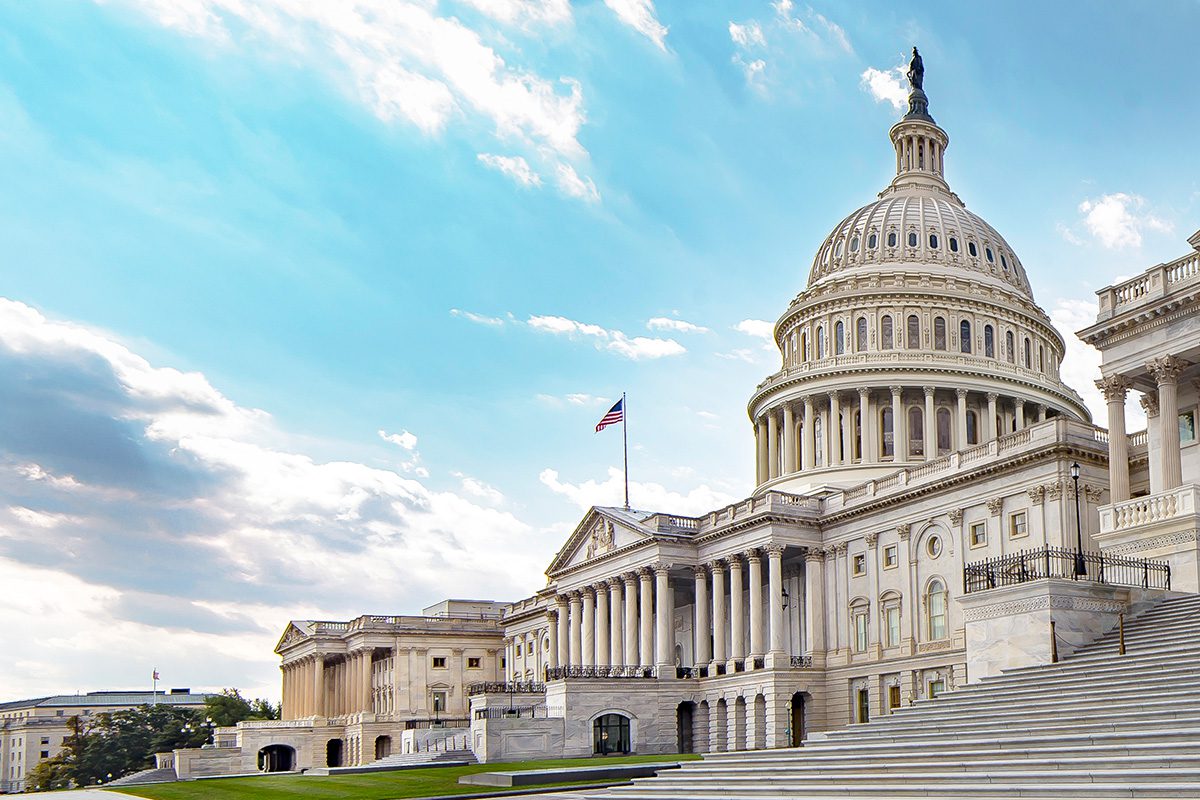
At a glance:
-
- The main takeaway: On July 4, 2025, the One Big Beautiful Bill was signed into law with changes to key provisions from the Tax Cuts and Jobs Act that will have a direct impact on individual taxpayers.
-
- Impact on individual taxpayers: Changes to several notable provisions, include the SALT cap, estate and gift tax exemption, child tax credit, and the deduction on qualified tips are set to impact millions of Americans.
-
- Next steps: Aprio’s tax advisors are proactively monitoring tax legislation developments and are prepared to help you navigate the potential changes.
Schedule a consultation
The One Big Beautiful Bill (OBBB), also referred to as H.R. 1, was signed into law on July 4, 2025, and contains amendments to numerous provisions that will directly affect individual taxpayers. Among these provisions are the permanent extension of rate cuts initially set to expire at the end of the year. Additionally, the bill expands standard deduction and permanently eliminates the personal exemption.
Individuals residing in high-tax states will benefit from a temporary increase in the limitation on the deduction of state and local taxes, commonly known as the SALT cap. The new legislation permanently establishes the increased estate and gift tax exemption along with other provisions outlined in this article.
Individual Income Tax Rates, Brackets, and Standard Deductions
When the Tax Cuts and Jobs Act (TCJA) was passed in 2017, several individual income tax provisions were modified and reworked. Taxpayers experienced adjusted tax rates and brackets, a nearly doubled standard deduction, and the elimination of the personal exemption. While these provisions were set to expire at the end of 2025, they have now been permanently enacted under OBBB. The tax brackets and rates will remain at 10%, 12%, 22%, 24%, 32%, 35%, and 37%, as established under the TCJA with inflation adjustments. Additionally, the 10%, 12%, and 22% brackets will receive an extra year of adjustment for inflation.
Without the passage of the bill, taxpayers who do not itemize would have seen their standard deduction revert to pre-TCJA amounts, which is nearly half of what taxpayers have seen for the past several years. While the deduction amounts under the OBBB have been slightly modified, they will remain very similar to TCJA amounts, with single filers seeing a deduction amount of $15,750, head of household filers seeing a deduction amount of $23,625, and married filing joint filers seeing a deduction amount of $31,500. Under the TJCA, taxpayers who did not itemize were temporarily able to deduct up to $300 ($600 for married filing jointly) of charitable contributions. H.R. 1 has reinstated this provision and increased the deduction amount to $1,000 ($2,000 for married filing jointly) for the taxable years beginning after December 31, 2025.
Another significant provision of the TCJA was the repeal of the personal exemption, which has now been made permanent. There is now a new temporary exemption of $6,000 available until December 31, 2028, for filers who are over the age of 65 (before the close of the tax year), with an AGI of less than $75,000 ($150,000 for married filing jointly). Taxpayers claiming this exemption will be required to include their social security number on their tax return.
Limitation on individual deductions for certain states and local taxes (SALT Cap).
Under the new provision, the existing SALT cap deduction threshold will temporarily increase from $10,000 to $40,000 for most individual taxpayers with an annual adjustment increase by 1% beginning in the 2025 calendar year. The deduction cap will then revert back to $10,000 in 2030.
Income Threshold Exclusion
The $40,000 SALT cap is phased down for high-income taxpayers with a modified adjusted gross income above $500,000 in 2025, with an annual adjustment increased by 1% starting in the 2025 calendar year. For every dollar earned above the threshold, the SALT cap is reduced by 30%. However, the SALT cap limitation will not fall below $10,000, regardless of the level of income earned.
A proposal within the House bill to restrict the state and local tax deduction for certain passthrough entities (PTEs) was not adopted by the Senate and consequently did not make it into the final version of the bill. This proposal would have essentially eliminated the ability of PTE owners in specified services, trade, or businesses from using a popular workaround to avoid the SALT cap.
The expanded SALT cap primarily benefits taxpayers residing in high-income tax states by significantly lowering the federal taxable income, especially for middle and upper middle-class taxpayers who earn high income and own property. However, as the previous $10,000 limitation was not indexed for inflation, some taxpayers residing in low tax states will also see a benefit.
Tax Credits Designed at Helping Families
Enhanced Child Tax Credit
To help alleviate the financial burden on American families and encourage family growth, the child tax credit was enhanced under the TCJA. Taxpayers saw the credit amount doubled per child, and more American families qualified for the credit as income thresholds were increased. These provisions were initially set to expire at the end of the 2025 tax year. However, under the OBBB, these enhancements have been made permanent, effective December 31, 2024, with the maximum credit amount increased to $2,200 per child. The credit also has a refundable portion, which has been set at $1,400. Both the credit amount and refundable portion will be adjusted for inflation. It is important to note that a social security number will be required for each child and the taxpayer to claim the credit. This provision will help to ensure American families, and Green Card holders with a valid social security number, are benefiting from the credit.
Adoption Credit
To encourage adoption for American families, the bill has made two notable changes to the adoption credit:
-
- Taxpayers claiming the adoption credit will now see up to $5,000 of the credit refundable for tax years beginning after December 31, 2024. It is important to note that the refundable portion is not eligible for carryover.
-
- Prior to the OBBB, if a state government determined that a child has special needs, the family adopting that child was eligible for the full amount of the adoption credit. Tribal governments now can, along with state governments, determine if a child going through adoption has special needs, giving more opportunity for adopting families to get the full benefit of the credit.
Changes to Moving Expenses and Commuting Expense Deductions
Under the TCJA, taxpayers who were reimbursed for or paid moving expenses out of pocket could not exclude the reimbursed amounts from their income nor claim a deduction for those expenses on their tax return. This provision was set to expire at the end of 2025, but HR-1 has made this provision permanent. However, due to the nature of these jobs, there is an exception for active-duty military members of the Armed Forces and Intelligence Community personnel, allowing them to exclude or deduct these expenses on their tax returns effective January 1, 2026.
Additionally, the TCJA provision that prevented taxpayers from excluding employer reimbursements for qualified bicycle commuting expenses from their income has also been made permanent under H.R. 1.
Student Loan Discharges and Educational Assistance Provisions
Introduced through the TCJA, if a taxpayer’s student loans were discharged due to death or disability, the discharged loan amounts were excluded from income on the taxpayer’s tax return. Taxpayers were also able to exclude up to $5,250 annually from their income for any educational assistance payments made by their employer if the payments were made before January 1, 2026. These provisions are now permanent under OBBB, with the payment date before January 1, 2026 eliminated and an inflation adjustment being added for the excludable amount of educational assistance payments for taxable years beginning after December 31, 2025.
Scholarship Fund Contributions
A new provision introduced under HR-1 allows taxpayers who contribute to tax-exempt organizations that provide scholarships to elementary and secondary students to claim a credit for those contributions effective December 31, 2026. This new provision is designed to encourage taxpayers to donate to these organizations and help provide opportunities to American students.
Students who benefit from these scholarships must be members of a household with an income not exceeding 300% of the area median gross income and must be eligible to enroll in a public elementary or secondary school. The credit amount cannot exceed $1,700 and must be reduced by the credit amount allowed on the taxpayer’s state tax return for qualified contributions made during the year. It’s important to note that the credit can be carried forward up to five years. There is also an anti-abuse provision to prevent the credit in cases where their own child is a beneficiary of the scholarship fund to which the taxpayer contributed.
Expanded 529 Plan Provisions
Under the TCJA, taxpayers were able to take tax-free distributions up to $10,000 for tuition expenses for students in grades K-12 from a 529 savings plan. HR-1 has increased the tax-free distribution amount to $20,000, effective January 1, 2026, and added additional expenses that qualify for tax-free distribution. Examples of additional expenses include, not exclusively, curriculum, curricular materials, books, and online education expenses.
Taxpayers can take tax-free distributions for the additional K-12 expenses after July 4th, 2025. HR-1 has also made certain post-secondary credentialing expenses eligible for tax-free distribution from a 529 savings plan. The changes to these provisions expand the ability of taxpayers to use 529 plan amounts annually.
American Opportunity Credit Limited
A provision in the bill has placed limits on the American Opportunity Tax and Lifetime Learning credits to American citizens and Green Card holders with a valid social security number. Taxpayers filing on behalf of a student, and the student will be required to provide their social security number to receive these credits effective December 31, 2025.
Premium Tax Credit Changes
Several changes have been made for taxpayers who receive the Premium Tax Credit (PTC). Beginning January 1, 2028, taxpayers will be required to verify specific insurance application information to qualify for the PTC and only individuals who are lawfully present in the United States will be eligible for the credit. Effective for taxable years beginning January 1, 2026, individuals will no longer be eligible to receive the PTC if they enrolled in coverage through certain special enrollment periods, and the limit placed on the repayment of excess premium tax credits received has been removed. This will now require full repayment of the excess premium credits received.
Achieving a Better Life Experience (ABLE) Accounts
Under the TCJA, taxpayers contributing to an ABLE account were able to make an additional contribution equal to the lesser of the applicable federal poverty level for a one-person household in the prior year or the beneficiary’s compensation for the year. Taxpayers were also able to make tax-free rollovers from a Section 529 qualified tuition program to qualified ABLE programs. Designated beneficiaries who made qualified contributions to their ABLE accounts were also able to claim the Savers Credit. These provisions, previously set to expire at the end of the year, have been made permanent. The Savers Credit amount has also been increased from $2,000 to $2,100 under H.R. 1; this increase will apply to taxable years beginning after December 31, 2026.
Trump Accounts: What Are They?
The bill introduces a new tax advantage account known as Trump accounts. These accounts are individual retirement accounts (but not Roth IRAs) that will be created or organized by the Secretary of the Treasury. Designed for eligible American children under the age of 18, deposited funds can grow within the accounts tax-free until the beneficiary reaches adulthood and distributes the money.
Contributions up to $5,000 can be made annually into a beneficiaries’ Trump account. There is no deduction allowed for taxpayers who contribute money to a Trump account. There are three types of contributions that can be made:
-
- Qualified rollover contributions, which are not included in the $5,000 limitation.
-
- Qualified general contributions, where charitable organizations, states, and local and tribal governments can contribute to a Trump account for beneficiaries under the age of 18 with these contributions not being included in the beneficiaries’ gross income.
-
- Pilot program contributions, where the Secretary will deposit $1,000 into each Trump account for children born between December 31, 2024 and January 1, 2029. Beneficiaries of Trump accounts, under the pilot program, are required to have a social security number and must be born in the United States. Roughly $400 million dollars have been set aside to fund the pilot program.
Employers can also contribute to Trump accounts on behalf of their employees up to $2,500 if they have a Trump Account Contribution Program. To benefit employees, these contributions are not included in gross income. Distributions from Trump accounts cannot be made before the beneficiary reaches the age of 18 and will be taxed at the long-term capital-gains rate.
Combat Zone Tax Benefits
Sinai Peninsula was added to the list of combat zone areas where members of the U.S. Army, Navy, Marines, Air Force, and Coast Guard performing services were able to claim combat zone tax benefits. These provisions where set to expire at the end of 2025, have now been made permanent under HR-1, and several locations were added. The added locations include Kenya, Mali, Burkina Faso, and Chad for taxable years after December 31, 2025. With these provisions, miliary personnel in located in these areas will be able to claim combat zone tax benefits.
Allowance for Certain Marketplace Insurance Plans to be HSA Eligible
Health Insurance Marketplace offers health coverage to those who do not have health insurance through an employer, Medicare, Medicaid, Children’s Health Insurance Program (CHIP), or other insurance plans. There are five different plan levels that are offered through the health insurance marketplace, with variable levels of coverage and deductibles. Among the five coverages offered, the bronze and catastrophic plans generally have low premiums accompanied by high deductibles. Previously, those enrolled in any marketplace health plan were unable to contribute to a health savings account (HSA), while those enrolled in high-deductible plans outside of marketplace were eligible to utilize the benefits of an HSA. In H.R. 1, §223 is amended to add the bronze and catastrophic plans to the list of “high-deductible health plans” eligible for HSA contributions beginning in tax year 2026.
This change in classification allows individuals enrolled in the bronze and catastrophic plans to contribute to an HSA as a method of both saving for medical emergencies and investing. Individuals that are enrolled in high-deductible health plans have been able to open their own HSA accounts and beginning in 2026 those enrolled in bronze and catastrophic plans through marketplace will be able to do the same.
Estate and Gift Tax Exemption
The provisions contained within the OBBB provide an extension to the expiring estate and gift tax provisions made available under the TCJA, which doubled the gift and estate exemption for all taxpayers. Beginning after December 31, 2,025 any decedent will have a $15,000,000 lifetime exclusion for gift and estate tax purposes. This exclusion will also be subject to an inflation adjustment on an annual basis. Unlike TCJA, the provisions do not have an expiration for the increased exemption amounts. With a 2025 exclusion of $13,990,000, this provision is adding a sizable increase to the total exemption beyond the expected inflation rate at the time of writing this article.
Prior to passage of the bill, the exemption was set to be reduced by nearly half at the end of December 31, 2025. The gift and estate exemption allows estates with assets under the threshold from being subject to taxation if the exemption has not been previously reduced by gifting. Gifting is also tax exempt up until an annual exclusion subject to inflation, which for 2025 was $19,000 per individual recipient. Any amount gifted more than the annual exclusion to a single individual reduces the gifting individual’s lifetime exemption permanently, or if there is no exclusion remaining, the gift in excess of the annual exclusion becomes subject to taxation.
Once depleted either by gifting or through the estate, amounts over the exclusion become taxable. The H.R. 1 changes reduce the need for protective estate planning for those under the $15,000,000 exemption while simultaneously affording those above the limit to preserve more of their estate for their heirs starting in 2026. The changes do not directly affect the annual gifting exclusion but afford individuals and their estates a larger limit before being subjected to taxation. Overall, these provisions protect the transfer of wealth from taxation for more individuals and estates.
163(j) Business Interest Modifications
New rules have been added to business interest limitations, also known as 163(j). The new provisions largely restrict businesses from capitalizing interest to avoid the code section. Under the new section, any interest that has been capitalized in the tax year will be considered first and the election to capitalize will be disregarded. The result is that the entirety of the interest to be capitalized will be for the purposes of this code section limited by 163(j) before any other interest is limited. To prevent this from penalizing businesses currently engaged in this practice, any interest that is carried forward is excluded. Therefore, only interest capitalized in tax years starting after December 31, 2025 will be affected by the new provision.
Notably, there are some exceptions to the rule. The interest that is capitalized under code sections 263(g) and 263A(f) have been excluded. In other words, interest capitalized for certain structures involving straddles and for certain taxpayers producing inventory that has a long production period are not subject to the new limitations. While not retroactive, this provision will largely prevent any tax planning strategies for businesses that utilized capitalization to avoid the limitation. Businesses affected by this provision include those that are over the gross receipts test threshold, are considered a tax shelter, or eligible businesses that failed to elect out of 163(j).
In addition to the capitalization restriction, H.R. 1 adds new items that commonly disregarded when calculating adjusted taxable income for the section. In particular, the amounts excluded include fall under sections 951(a), 951A(a), and 78 as well as some of the associated deductions relating to those sections. These sections largely deal with controlled foreign corps, foreign tax credits, and global intangible low-taxed income (GILTI). Therefore, through the addition of these sections, companies who derive income, dividends, or tax credits from foreign entities will have to calculate taxable income without those benefits. A reduction of taxable income for the purposes of 163(j) will result in a lower allowable deduction for any interest expense. In other words, companies with foreign holdings and income are likely to see lower allowable interest deductions starting in tax years beginning after December 31, 2025, and will consequently have higher taxable incomes for each tax year affected.
The combined sections will result in a significant number of taxpayers subject to 163(j) business interest limitations now experiencing an increase in the total interest that will be limited and consequently less ability to deduct interest in future tax years. The affected entities and individuals will also have reduced recourse to mitigate these provisions through capitalization.
Excess Business Loss Limitation (Noncorporate)
Internal Revenue Code (IRC) §461(l) has been made permanent by HR-1, extending the limitation on excess business losses of noncorporate taxpayers. This code section restricts the amount of business losses that a taxpayer can use to offset nonbusiness income. The amount of business losses deductible in a given tax year are limited to the deductions, in excess of income, attributable to a taxpayer’s trades or businesses plus a threshold amount, which is adjusted for the cost of living. For example, the threshold amount in the 2024 tax year was $305,000 ($610,000 for married filing jointly). This provision was set to expire after the 2025 tax year but was extended through the 2028 tax year and ultimately made permanent with the passing of the OBBB.
Solidifying the excess business loss limitation permanent will limit the deduction a noncorporate taxpayer can take for their business losses in a given year. The excess business loss can be carried over and utilized in a future tax year.
AMT Exemption Amounts Extended
The OBBB extends the increased Alternative Minimum Tax (AMT) exemption amounts and modifies the phaseout thresholds, effectively locking in a more favorable AMT framework for individual taxpayers. Prior to this bill, the higher AMT exemption amounts and more generous phaseout thresholds were set to expire at the end of 2025. Beginning in 2026, the AMT exemption for married couples would have reverted to approximately $109,800, with the exemption beginning to phase out at income levels around $209,200. Without Congressional action, this rollback would have caused a sharp increase in AMT exposure for many upper-middle-income households, particularly those earning between $200,000 and $500,000 annually, who may claim significant deductions or have high incentive-based compensation.
The new legislation makes the higher exemption amounts and higher phaseout thresholds permanent and indexes them for inflation beginning in 2026. Additionally, under the previous law, once a taxpayer’s income breached the phaseout threshold, their exemption was reduced by $0.25 for every dollar of income in excess of the threshold amount. Under the new law, a taxpayer’s AMT exemption figure will be reduced by $0.50 for every dollar of income in excess of the threshold amount. This change will prevent the AMT from re-expanding into middle-income territory and will preserve the narrower reach it has maintained since the enactment of the TCJA.
The beneficiaries of this change are primarily upper-middle-income taxpayers who would otherwise have been pulled into the AMT regime in the coming years. The provision goes into effect for tax years beginning after December 31, 2025, meaning the impact will be seen starting in the 2026 tax filing season.




